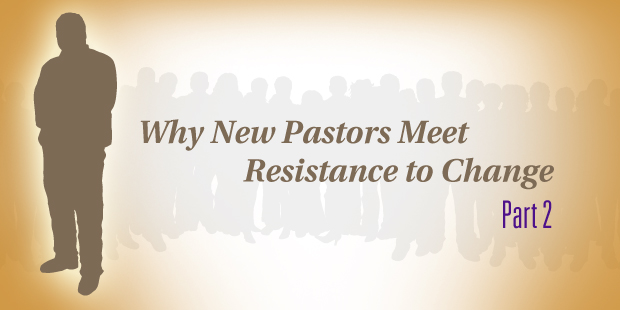I still love to hold a book in my hands, mark it up and get it a little dog-eared. I like to hold a pen in my hand and write, that tactile experience helps my creative juices flow. And I’d rather talk to a person than book something online. That makes me a little “Old School” in some ways.
Sometimes the term Old School is used in a positive way, even endearing or desired. Like when something is considered vintage or classic. I own some really nice guitars, none are vintage but several are replicas of the old classics. That’s how strong the market is. Brand new guitars are made to look just like some of the cool guitars that came out in the 50’s and 60’s.
Sometimes the phrase Old School is used in a more derogatory way. As if to imply it is out of date, irrelevant or passé. For example, someone recently told me about a church that still ran a bus ministry commenting that it was “old school.” My reply was that if it’s working, I’m not so sure it’s old school, but maybe it is.
However you use the phrase, whether cool and endearing, or a little derogatory, I’m going to submit that there are a number of “Old School” leadership characteristics that are never out of date, irrelevant or lame. In fact, they are timeless and we’d all be wise to keep them fresh and alive in our lives.
Top Ten “Old School” Check-lists for leaders:
At no time is it appropriate for a leader to be rude. Misused power and authority is at least in poor taste and may at times be an indication of a leader’s character. Kindness is a fruit of the Spirit and a courteous nature is deeply interwoven within kindness. Courteous doesn’t mean lacking in strength or unable to make tough decisions. It reflects more an attitude of consideration for the disposition of other human beings. That is never Old School.
Most of the leaders I know are hardworking people. They are committed to the mission and take their responsibilities seriously. They treat the meaning of their paycheck with honor rather than entitlement. I will admit, however, that I have met a growing number of pastors and ministry leaders who don’t possess a strong worth ethic. They actually work far less hours and still complain that they are overworked. I think the answer is in calling, passion and being in the right seat. I don’t think Old School means working hard and others don’t. I really believe it’s about finding your sweet spot – the place God calls you to be.
I love a leader who is determined. I don’t mean a naïve leader who can’t see or face reality, but one who looks reality square in the eye and says “I won’t give up.” I think it takes that spirit to be successful in the local church. Kevin Myers, founding pastor of 12Stone® Church planted the church in 1987. For the first seven years the church struggled. He never gave up. Yes, he came close, we all do, but he stayed true and determined, and the results of that determination speak for themselves.
Don’t you just love being around generous people? I don’t mean just about money, like your friends who will pick up the tab in a restaurant. I mean people who have a generous nature at their core, from their time, to kind words and encouragement, to investing in you and sometimes even financially. Those leaders truly breathe life into the people they lead.
Risks are part of every leader’s life. If you won’t risk you can’t lead. The art is in knowing how far to risk. How far do you push a conversation? How much debt to you acquire? Do you hire the candidate or not? There is a risk to reward ratio for every decision. When you are pushing forward, it takes courage to make the tough call. The answer is not in a textbook. It’s all about prayer, experience and wise counsel. The lack of courage results in comfort and coasting and both are death to a healthy church.
I either jog or ride a stationary bike every day. I’m not fast or impressive. My typical jog is three miles and I do about five miles on the bike. It’s slow and not pretty. But, I do it every day. Don’t underestimate the power of every day. Whether it’s prayer, exercise, or saying “I love you” to your spouse, “daily” is a life changer. This same idea is true for your leadership practices. Discipline matters.
The foundation of New Testament spiritual leadership is love. Jesus made this abundantly clear. I John 4:8 &16 says God is love. I Corinthians 13:13 says that the greatest of these (faith, hope and love) is love. The Epistles are loaded with admonitions to love. It is interesting that this is the most widely known, and least written about characteristic of our leadership. It’s simple to understand but not easy to live. Personally I think this is the core of Christian leadership and if it’s “Old School” then we’d all be wise to get a little vintage in our leadership.
There is a verse in the New Testament that has made me uncomfortable as a leader. I can’t deny its presence so I seek to understand it. It’s part of the parable of the shrewd manager. Luke 16:8 “The master commended the dishonest manager because he had acted shrewdly. For the people of this world are more shrewd in dealing with their own kind than are the people of the light.” We are called to be wise, prudent, thoughtful, and sometimes shrewd. Even when shrewd seems to have an edge to it. When it’s about the Kingdom, God calls us to be judicious.
From Genesis chapter three to James chapter four, we know the lessons of pride. God is clear on the subject. Like cardiovascular disease is the number one killer in America today, pride is the number one killer of church leaders. Pride may not rob you of your physical life, but it can essentially rob you of God’s favor in your spiritual life. Humility is the exercise and good diet for the soul of a leader.
From speaking the truth in love (Ephesians 4:15) to facing the truth of reality, leaders who are trustworthy are truthful. I find that most church leaders are honest people. Really, very few are liars. But many are prone to exaggerate. From stories in sermons to the attendance of the church, let’s all be careful out there to tell it the way it really is.
Perhaps you can think of some others, but for now, which one would you want to strengthen for the next thirty days? Maybe you could make one a month a leadership devotional bible study for yourself. I encourage you to jump in, take advantage of these thoughts, and even get a little Old School if needed.
This article is used by permission from Dr. Dan Reiland’s free monthly e-newsletter, “The Pastor’s Coach,” available at INJOY.com

Tags: Dan Reiland, Leadership Engine, Staff, Staff Development
|
What is MyVisionRoom? > | Back to Leadership >
































